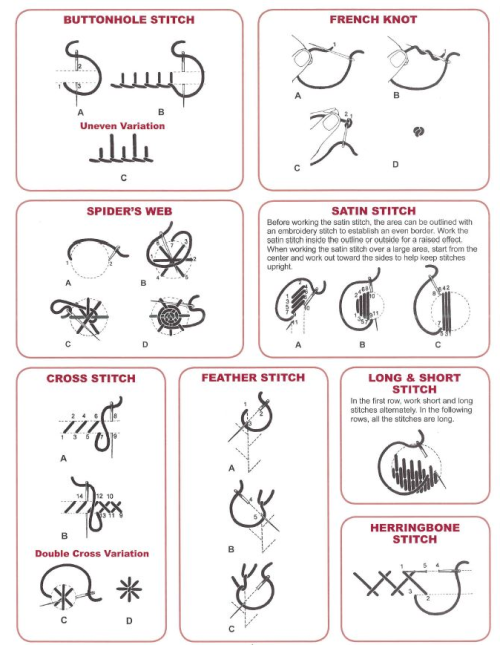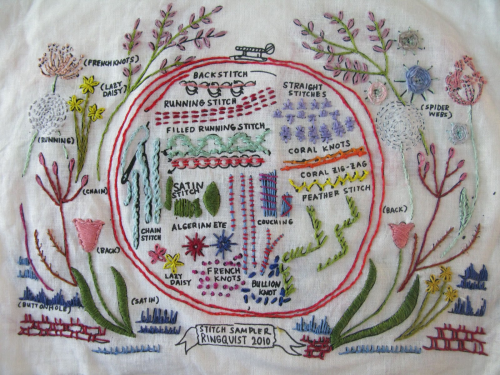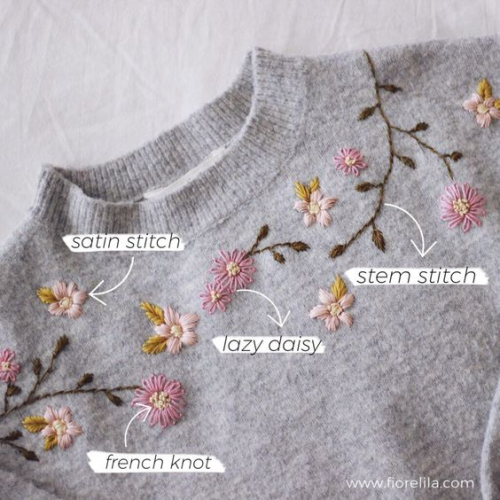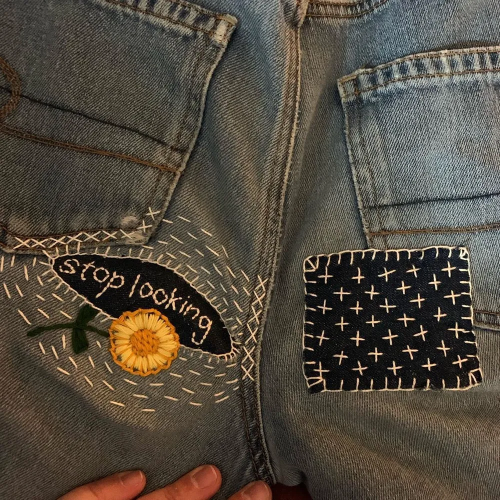Sevika’s Journey To Motherhood
sevika’s journey to motherhood
wlw


sevika never imagined herself in this situation—married, settled down, and now about to be a mom. when you first talked about having a baby, she hesitated. not because she didn’t want it, but because she wasn’t sure she deserved it. but the moment she saw the positive result, she swore to herself she’d give you and the baby the world.
she keeps her affection low-key but constant. she isn’t one for big, dramatic gestures, but you’ll notice the way she starts keeping healthier snacks in the kitchen (even though she complains about how boring they are), how she always carries an extra blanket for you on the couch, or how she’s suddenly interested in researching baby stuff online (though she grumbles about the “stupid forums”).
sevika makes sure the apartment is baby-proofed well before you even hit your third trimester. you laugh when you find her arguing with some handyman she hired about how “these outlet covers are trash,” but she’s dead serious about making the place safe.
she’s not outwardly soft, but her actions speak volumes. she doesn’t say much when you’re feeling nauseous or exhausted, but she’ll quietly rub your back, hold your hair, and bring you water without needing to be asked. she also won’t let you lift a damn thing once your belly starts to show.
during your pregnancy, she works fewer hours, despite hating to take time off. she doesn’t say it’s because of you, but it’s obvious. “can’t trust those idiots to handle things while i’m gone,” she mutters, but she’s home almost every night for dinner now, something she rarely did before.
when she feels the baby kick for the first time, she freezes. you tease her for looking so stunned, but you can see the emotions she’s trying to hide. later that night, you catch her resting her hand on your belly while she thinks you’re asleep, a rare, unguarded moment of pure tenderness.
once the baby is born, sevika is more hands-on than you expected. she’s a natural at holding them, rocking them to sleep, and she insists on taking over night shifts when she’s home because “you’ve been through enough already.”
she’s fiercely protective of both you and the baby. the moment someone so much as raises their voice in your apartment, her glare alone could silence them. “this is my family,” she says firmly. “no one messes with that.”
despite her gruff exterior, sevika is surprisingly gentle with the baby. she talks to them in a low, soft voice while changing their diaper or feeding them, and you’ve caught her humming under her breath while holding them in the rocking chair.
her favorite moments are when the three of you are together. whether it’s a quiet evening on the couch or a rare weekend where she doesn’t have to work, she’s happiest when you’re all there, safe and content. she’ll never admit it out loud, but it’s the most at peace she’s ever felt in her life.
sevika has always liked adding glitter to her cigars—it’s a strange but oddly charming habit. but once you’re pregnant, she quits it cold turkey. “i don’t want that stuff getting anywhere near you or the baby,” she says gruffly. she even starts avoiding wearing heavily scented cologne, just in case.
sevika’s biggest fear after the baby is born is accidentally hurting them with her prosthetic arm. when you hand the baby to her for the first time, she hesitates, staring down at her mechanical hand like it’s an alien thing. “what if i’m too rough? what if i hurt them?” she mutters. it takes a lot of reassurance—and a quiet, heartfelt moment when the baby grabs one of her fingers, metallic and all—for her to start trusting herself.
when you suggested the reciprocal IVF method, sevika had a moment of vulnerability. “you really want my kid growing inside you?” she asked, voice low, almost disbelieving. the idea of combining your DNA with hers made her feel more connected than she could put into words, though she didn’t say that outright. after the procedure worked, she was in awe—and also ridiculously smug. “looks like we make a good team,” she’d say with a smirk, though you could see the pride in her eyes.
sevika teases you mercilessly about your cravings but secretly loves indulging them. she’ll grumble about how ridiculous it is to find fresh strawberries at 2 a.m., but she’ll still show up with a basketful. when you catch her snacking on the leftovers, she’ll just shrug and say, “figured i should see what all the fuss is about.”
you weren’t the only one nesting. sevika pretended she didn’t care much about decorating the baby’s room, but she’d come home with little things—a mobile, a soft blanket, even a tiny stuffed animal that looked suspiciously like the one she used to have as a kid.
she wouldn’t be caught dead admitting it, but you found her poring over baby books late at night. “i’m just checking something,” she said gruffly, shutting the book when you walked in. but you noticed her making mental notes about things like swaddling techniques and babyproofing hacks.
when your contractions started, sevika was unshakable—or at least she tried to seem that way. she held your hand through every step, though you could see the tension in her jaw. she hated seeing you in pain but didn’t leave your side for a second. when the baby finally arrived, she was speechless. the only words she managed were a low, reverent, “you’re amazing,” as she held your hand tightly.
sevika takes postpartum care seriously. she makes sure you’re eating, sleeping (as much as possible), and not overexerting yourself. “you’re not doing this alone,” she tells you firmly. she’s the type to massage your back after a long day or remind you that it’s okay to cry when things feel overwhelming.
the first time the baby laughed was because of sevika. she was making a silly face—completely out of character—and the sound of the baby’s giggles was enough to make her stop and blink, caught off guard. you swore you saw her eyes get a little misty, though she’d never admit it.
despite her rough exterior, sevika starts creating traditions for your little family. movie nights where she insists on holding the baby, cooking dinner together (she’s surprisingly decent in the kitchen), and quiet mornings where she lets you sleep in while she takes the baby for a walk.
when you both take the baby out for the first time, sevika is on high alert. her eyes scan every stranger, her body instinctively positioning itself between you, the baby, and the crowd. she even growls at someone who bumps into the stroller. “relax,” you whisper, but you can’t help feeling a little safer with her there.
sevika isn’t the type to get overly sentimental, but she does think long and hard about what the baby should call her. eventually, after some quiet reflection, she decides on “mama”—simple and solid, just like her. she likes the sound of it, and the thought of her kid calling her that makes her chest tighten in a way she can’t quite explain.
as for you, she insists on “mommy” (or whatever variation you prefer). she thinks it fits your nurturing nature perfectly and secretly loves the idea of hearing the baby call you something soft and sweet.
when the baby starts babbling “ma-ma” first (completely by accident), sevika acts casual, but you can tell she’s beaming with pride inside. still, she’ll tease you if “mommy” comes out soon after. “guess they love us both equally,” she says with a smirk, though you can see the softness in her eyes.
More Posts from Stubbytime and Others


She's 7 beers in.
Embroidery 101

Introduction:
Embroidery is a craft that uses thread to decorate fabric (and other materials). It's a great way to spruce up a garment, customise objects, and to hide mends you've made!
Embroidery is usually done with embroidery floss, but depending on the base material you're working on, you could also use yarn, ribbons, or plain old sewing thread. Don't be afraid to experiment!
Embroidery is easier to do on taut fabric than limp fabric. That's why most people use embroidery hoops. While not strictly necessary, a hoop will make your life so much easier.
Using the right needle will help, too. Use a crewel needle if you're working with embroidery floss, a chenille needle if you're working with ribbon or yarn, or a tapestry needle if you're doing cross-stitch embroidery on open-weave fabrics.
While there are many types of embroidery from all over the world, this post will focus on some basic stitches you can use in your own work.
Basic embroidery stitches:
For a more thorough overview of embroidery stitches, check out these embroidery tutorials by Mary Corbet's Needle 'n Thread.
The following images show some of the most basic stitches:


(Image source)
The 16 stitches in the images above can be combined into any shape or form you want. You might recognise some from my hand sewing post: embroidery is a type of hand sewing, after all.
You don't need to know all of these to be able to make beautiful things. Even just one of these is a great start for a project.
This sampler by Sew Nancy shows how these basic stitches can be used to outline shapes or form flowers, for example.

(Image source)
Fiorelila used a combination of the stem stitch, satin stitch, lazy daisy, and french knots to spruce up this sweater:

(Image source)
And this person used lazy daisies to add some flair to their jeans:

(Image source)
Embroidery for visible mending:
Embroidery is a useful tool to hide mends you've made, or to even accentuate them if that's your style. This is called visible mending. While this is a topic that deserves a post on its own, here are some quick examples:
Like this fix by Redditor Takemythyme who embroidered a rose over a hole in a knit fabric:

(Image source)
Or like how this person has spruced up their jeans repairs with embroidery:

(Image source)
In this example, The Woolery Guy chose to use flower embroidery to make a hole in a knit fabric look like it was there by design:

(Image source)
For more examples, check out Pinterest or VisibleMending.com.
Conclusion:
Embroidery is a useful skill to give new life to your wardrobe. You can use it to give some flair to items you've grown bored off, or even to mend your clothes.
Once you've got a few basic stitches under your belt, the possibilities are endless. Be creative and have fun with it!
Good luck and feel free to show me your work!






Please share this!!!!! As you resident vitiligan and fellow artist I am here to educate people on how to properly create a character with vitiligo and other things to keep in mind about the disorder.
Only 1% of the entire world’s population has vitiligo but I see so many artists making characters with it when they sometimes don’t even know what vitiligo is and pass it off as “skin pigmentation”. Like— what does that even mean??? XD
It’s not an aesthetic and it won’t get you “diversity points” so stop romanticizing vitiligo!
ok yes the idea of him dicking you down like crazy right after your wedding reception is really fun, but think about the aftermath!!! when you’re both kind of exhausted but still hopped up on adrenaline and excitement, and you refuse to get up from the bed but he knows you — you’re gonna want to take your makeup off before bed. so he carries you bridal style to the bathroom, and you’re whining but also giggling, and you let him take off your makeup for you before you two shower. and he’s gentle with it, movements still a little bit uncertain, and he fumbles sometimes, but he knows your routine. and then you wash his hair in the shower and he rubs the body wash into your skin, and he dries you off before he does himself, and he carries you back to bed, and he won’t stop smiling and looking at you, and you’re laughing, and you’re like “stop staring at me!!! i can’t sleep like that!!!” and he has that dopey, lovesick grin on his face and he’s telling you—
A pouch like that seems super comforting, all nice and warm and secure next to momma centaur

so comfee and cozy, with room for friends!
people already sent me this over 15 times
how to pick a therapist
A friend recently asked how I found my therapist, who I absolutely adore. I was in a bad place when I first started seeing her, and she has helped me completely turn my life around. The fact is that I saw a lot of bad and mediocre therapists, then finally got lucky. That said, now that I know what a really good therapist is like, I do have some advice for finding one:
Do interview sessions with multiple therapists and take notes on what you like or don’t like. It’s not high maintenance or pushy to ask a lot of questions. You’re a customer looking for someone to provide a service - an expensive service, possibly for a long time. This is someone you will trust with your secrets and your health. Sometimes, your life.
If you’re in a dark place while searching, try to find a level-headed friend or family member to help you interview. The most frustrating thing about mental healthcare is that patients are often too vulnerable and ill to self-advocate and, as a result, often tolerate unacceptable behavior from their mental healthcare providers. Bad providers will blame patient dissatisfaction on patients being unstable. There is little accountability for their performance. If you can’t stand up for yourself, it helps to have a trusted third party that can either come with for interviews or, at the very least, who can talk with you after about your concerns and options. If a therapist asks why you want to bring someone with, simply say, “I’m not mentally able to self-advocate at this time. I am more comfortable having someone with me for support.”
Look for someone who does holistic therapy and/or who talks about using a variety of methods, depending on patient needs. Ask what types of methods they use and if they prefer one over others. A big part of therapy is teaching you a variety tools that will help you cope with stressors. You should expect your therapist to have more than one tool in their arsenal as well.
Ask their opinion on medication. I have met therapists who don’t believe in medication at all and some who won’t even work with patients that aren’t willing to medicate. Personally, I feel the only correct response is, “Medication is an important tool for some people, but it’s not the answer for everyone.”
Ask them what successful therapy looks like to them and what they think the most important things are to be successful in therapy. You want someone who talks about how different patients need different things. For some people, stability is the goal. Others have more specific objectives. The worst sort of therapist is one that uses the same structure for every patient because they’ve decided it’s the “right way.”
During interviews, you do want a therapist to mention that a patient has to be willing to change and give effort. However, you don’t want them to spend an excessive amount of time going on about how YOU have to do the work and “this won’t work if you’re not willing to give it your all” and blah, blah, blah. That is the sign of a therapist that will see therapy not working and immediately say, “Ah, not my fault. They weren’t doing the work,” absolving themselves of any extra work or creative thinking.
The final item is tricky to spot in an initial interview, but it’s crucial. Therapy requires a delicate balance. A good therapist can guide a session and push their patient without being domineering or dismissive. You can spot the domineering therapist fairly easily: they will tell more than they ask, make you feel uncomfortable or self-doubting, and will minimize your wishes or concerns about therapy. The lazy therapist is much more common. They’re not as harmful or obvious as the domineering therapist, but they probably won’t help you. They let you guide therapy, don’t ask many questions, and don’t challenge you. They will let you use therapy as a venting session or allow you to rehash the same handful of traumas without doing any work to process them in a new way. If you find yourself with a domineering or lazy therapist, fire them.
What has made my therapy successful is that my therapist is flexible, adaptable, and willing to try new things and new methods. There were periods where I was actually too ill to do any work, but she never addressed it like, “Ah, She Won’t Do The Work.” She just scheduled us for very frequent sessions and kind of quietly came up with things to keep me busy and stable, monitoring my state for safety until I reached a place where I was able to do the work.
When something didn’t work, it was never my fault, and she never spent any time lamenting that it hadn’t worked. She would just immediately say, "Okay, not this, then. I have something different planned for us to try next week.” Just like that, we were talking about what we were going to do next instead of thinking about the thing that failed.
The mental healthcare world, at least here in the US, is pretty fucked up. For a time, it was definitely doing me more harm than good, and I have trauma from my experiences with bad mental healthcare providers. I think it’s important to talk about patient self-advocacy and provider accountability. I hope the list above will help someone avoid bad providers and get the help they need. If you would signal boost this, I’d really appreciate it.
Can a centaur bend down at the waist to pick something up the same way a horse can lower its head? Or do they have to do an awkward stance to reach whatever they dropped?

Oh absolutely! I mean, I think it would depend on the flexibility of the centaur, much like touching your toes - if you haven't trained and stretched for a bit of flexibility they would likely have to bend a knee to get down there.

-
 vmpiredolls liked this · 1 month ago
vmpiredolls liked this · 1 month ago -
 katarandaa reblogged this · 1 month ago
katarandaa reblogged this · 1 month ago -
 theflyingforklift liked this · 1 month ago
theflyingforklift liked this · 1 month ago -
 sykokittyy liked this · 1 month ago
sykokittyy liked this · 1 month ago -
 wolf-lover liked this · 1 month ago
wolf-lover liked this · 1 month ago -
 himbokutoes liked this · 1 month ago
himbokutoes liked this · 1 month ago -
 1-800-fuck-this-shit liked this · 1 month ago
1-800-fuck-this-shit liked this · 1 month ago -
 vikashoneybee liked this · 2 months ago
vikashoneybee liked this · 2 months ago -
 mikarui3 liked this · 2 months ago
mikarui3 liked this · 2 months ago -
 alexis-nhl-f1 liked this · 2 months ago
alexis-nhl-f1 liked this · 2 months ago -
 joehbc reblogged this · 2 months ago
joehbc reblogged this · 2 months ago -
 joehbc liked this · 2 months ago
joehbc liked this · 2 months ago -
 pastel-princess-please liked this · 3 months ago
pastel-princess-please liked this · 3 months ago -
 mymywayjoy liked this · 3 months ago
mymywayjoy liked this · 3 months ago -
 vyaka678399 liked this · 3 months ago
vyaka678399 liked this · 3 months ago -
 ch4piadora liked this · 3 months ago
ch4piadora liked this · 3 months ago -
 mangohabanerobabe liked this · 3 months ago
mangohabanerobabe liked this · 3 months ago -
 orangecutie12 liked this · 3 months ago
orangecutie12 liked this · 3 months ago -
 berryblssom liked this · 3 months ago
berryblssom liked this · 3 months ago -
 lesbianinyourarea liked this · 3 months ago
lesbianinyourarea liked this · 3 months ago -
 breezymcgee liked this · 3 months ago
breezymcgee liked this · 3 months ago -
 northfromthenorth liked this · 4 months ago
northfromthenorth liked this · 4 months ago -
 littlegretlost liked this · 4 months ago
littlegretlost liked this · 4 months ago -
 qualityglitterarcade liked this · 4 months ago
qualityglitterarcade liked this · 4 months ago -
 thatweirdfemmeyanaiz liked this · 4 months ago
thatweirdfemmeyanaiz liked this · 4 months ago -
 uservikalover liked this · 4 months ago
uservikalover liked this · 4 months ago -
 singularneuron liked this · 4 months ago
singularneuron liked this · 4 months ago -
 sigh-icantfindausername liked this · 4 months ago
sigh-icantfindausername liked this · 4 months ago -
 skriri liked this · 4 months ago
skriri liked this · 4 months ago -
 fullbarbarianpenguin liked this · 4 months ago
fullbarbarianpenguin liked this · 4 months ago -
 danityrell liked this · 4 months ago
danityrell liked this · 4 months ago -
 rkrivees-blog liked this · 4 months ago
rkrivees-blog liked this · 4 months ago -
 slasherthroat liked this · 4 months ago
slasherthroat liked this · 4 months ago -
 blurredfroggy liked this · 4 months ago
blurredfroggy liked this · 4 months ago -
 klownkween liked this · 4 months ago
klownkween liked this · 4 months ago -
 luvy0uf4l liked this · 4 months ago
luvy0uf4l liked this · 4 months ago -
 unicornprincess-27 liked this · 4 months ago
unicornprincess-27 liked this · 4 months ago -
 normal-human-girl liked this · 4 months ago
normal-human-girl liked this · 4 months ago -
 wh1msyk1tten liked this · 4 months ago
wh1msyk1tten liked this · 4 months ago -
 sleepyskylar liked this · 4 months ago
sleepyskylar liked this · 4 months ago -
 uhmsosboutthst liked this · 4 months ago
uhmsosboutthst liked this · 4 months ago -
 technicallyholysheep liked this · 4 months ago
technicallyholysheep liked this · 4 months ago -
 slodkayerim liked this · 4 months ago
slodkayerim liked this · 4 months ago -
 lildemone liked this · 4 months ago
lildemone liked this · 4 months ago -
 andiiijnll liked this · 4 months ago
andiiijnll liked this · 4 months ago -
 meofwow liked this · 4 months ago
meofwow liked this · 4 months ago -
 ilovewomentothemax liked this · 4 months ago
ilovewomentothemax liked this · 4 months ago -
 marah280 liked this · 4 months ago
marah280 liked this · 4 months ago -
 eldioctopus liked this · 4 months ago
eldioctopus liked this · 4 months ago


